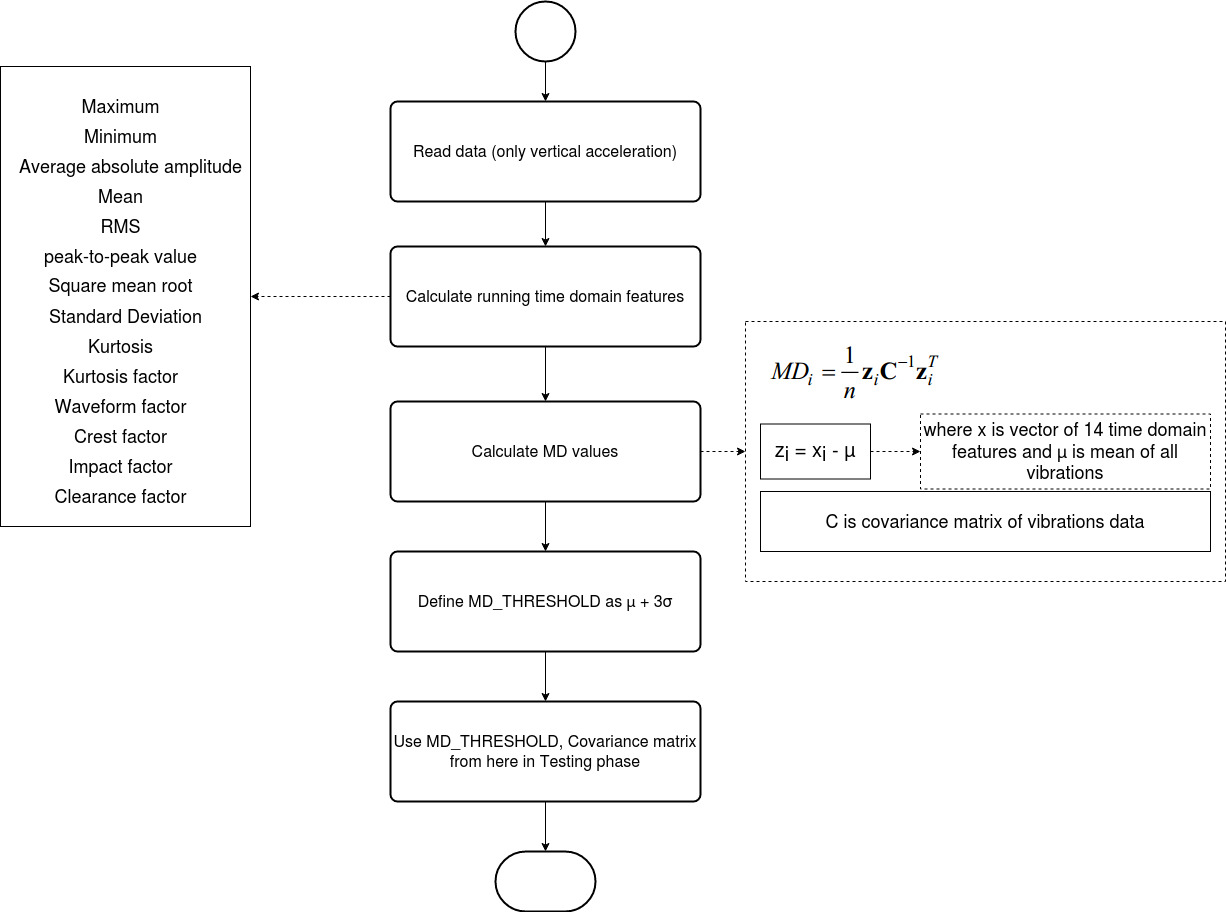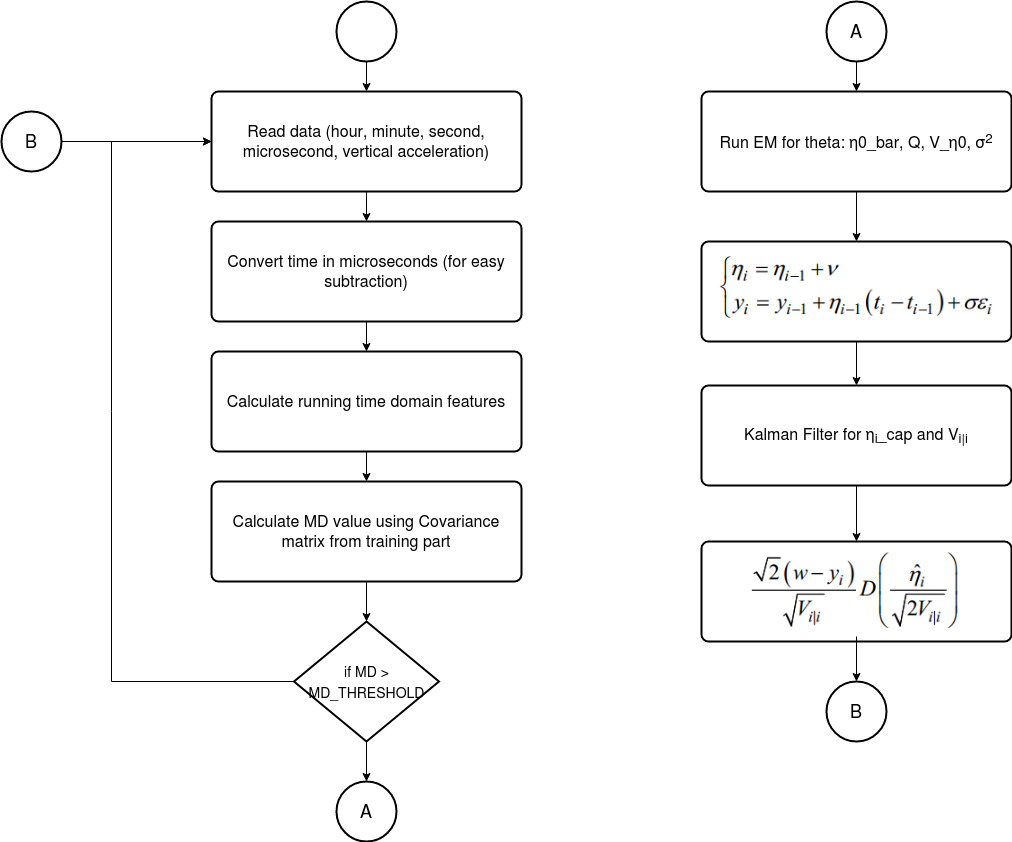This is a solution to the IEEE PHM 2012 Prognostic Challenge. It focused on the estimation of the Remaining Useful Life (RUL) of ball bearings, a critical problem among industrial machines, strongly affecting availability, security and cost effectiveness of mechanical systems.
We use a two-stage process for predicting the RUL using a single statistic derived from 14 time-domain features of the observed vibration signals by modelling the degradation process as a Wiener process and continuously updating prior parameters of the underlying linear state-space model of degradation.
- Multiple time-domain features were fused into one index by calculating the Mahalanobis distance from a known healthy state.
- The Wiener process was used to model the degradation process of the ball bearings
- The Mean and Variance of the drift coefficient used Wiener process was predicted using the Kalman filter
- The Expectation Maximization (EM) algorithm was used to estimate the unknown parameters which in turn are used in the Kalman Filter
- Rauch-Tung-Striebel (RTS) Smoother is used for fixed interval smoothing, taking into consideration both, the past and future values to predict the current one.
Current code has commented the eqn (9) and KF additional update
- A Two-stage Data-driven Based Prognostic Approach for Bearing Degradation Problem by Yu Wang, Yizhen Peng, Yanyang Zi, Xiaohang Jin, Kwok-Leung Tsui
- A Wiener-process-based degradation model with a recursive filter algorithm for remaining useful life estimation by Xiao-Sheng Si, Wenbin Wang, Chang-Hua Hu, Mao-Yin Chen, Dong-Hua Zhou

